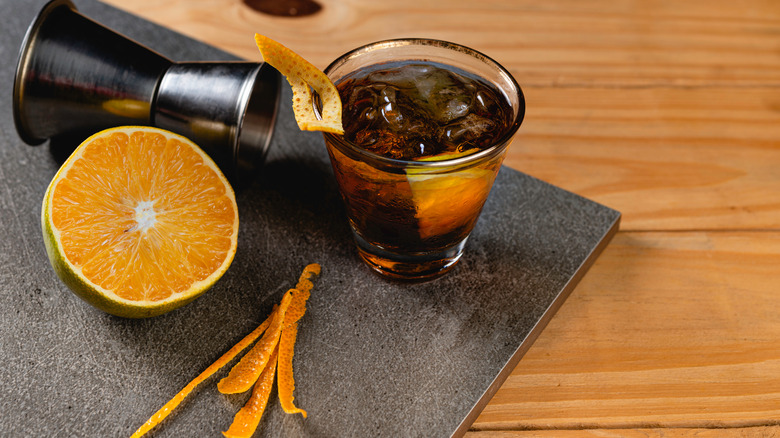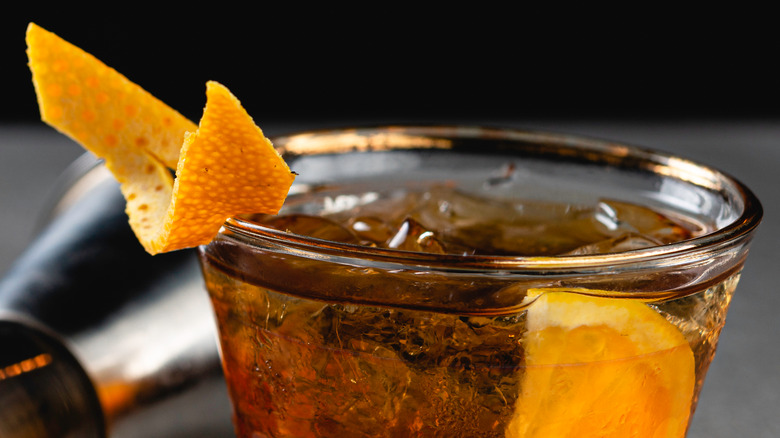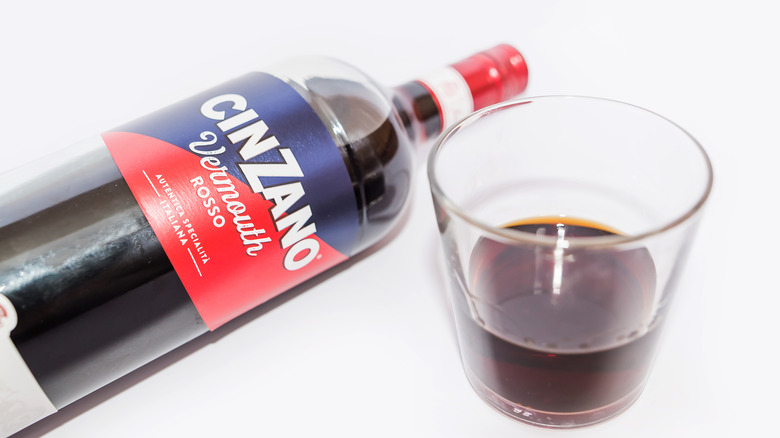Brazil's Rabo De Galo Cocktail Is Deceptively Simple
Cocktails often have intricate origins stories — whether with a disputed invention or a unique regional affiliation. Often, all it takes is a single bar and a stream of enthusiastic customers to put a new mixture of boozy ingredients on the map. Such an organic process highlights the varying global influences that often pour into the invention of new drinks.
Take the Rabo de galo, a flavorful and potent liquor-based cocktail popular in Brazil. Though it imparts a big flavor, it's surprisingly simple to make — two parts Brazillian cachaça, and one part Italian Vermouth and cynar — it's a showcase for the country's globalized fusions. Consumed in boisterous dive-bar-like establishments called pés-sujos, drinking a Rabo de galo's is an essential Brazillian experience. Plus, the drink's commonly accompanied by a ritual of dripping some on the ground as an offering to the saints. Boozy, tasty, and accessible, there's a reason it's so intertwined with the South American nation. Let's dive into what the deliciously straightforward concoction is all about.
History of Rabo de galo
This uniquely Brazillian creation traces its origins to the 1950s when vermouth producer Cinzano from Italy established a production facility in São Paulo. Brazilians didn't enjoy drinking vermouth neat, so in an effort to improve sales, Cinzano promoted intermixing spirits. The logical alcohol to reach for was cachaça — Brazil's beloved sugarcane-based spirit. While most infamous for its use in caipirinhas, a new creation of cachaça mixed with vermouth, cynar, and lime quickly took Brazillian bars by storm.
Served in pés-sujos, vibrant dive-like venues, the Rabo de galo established itself as a delicious way to imbibe strong liquours at a low price. These watering holes were also the ground zero of the practice where spilling some cachaça as a holy offering arose. The drink's name derives from a play on words on the term "cock tail" — Rabo de galo translates to rooster's tail in Brazillian Portuguese. Now a symbol of Brazil, the cocktail showcases the multicultural influences and homegrown ingenuity of the South American nation.
How the Rabo de galo is made
The Rabo de galo is a potent mix, clocking in at nearly 25% ABV, with a super straightforward creation. In addition to the fragrant and boozy cachaça, it integrates a red variety of vermouth, which has a more intense, sweet flavor. The drink also incorporates cynar, which is an Italian artichoke-based bitter. The creation starts with 1 1/2 oz of cachaça and a smaller amount — around 2/3 oz — of a one-to-one ratio of cynar and red vermouth. The three liquors are stirred with ice and then served in a large glass or neat in a tall shot glass. Often, a lime rind twist rounds out the presentation.
A multitude of variations exist in Brazil. In addition to bartenders utilizing different ratios, varying cachaças impart unique flavors. Some even create blends of the spirit for the cocktail, employing both aged and fresh versions. And some choose to add a dash of extra bitters to the mix, whether it's a grapefruit base or Amaro Averno. Such concoctions impart a less sweet character. With the cocktail now ubiquitous in both everyday dive bars and cutting-edge mixology hotspots, localized renditions showcase the impressive malleability of the simple drink.


